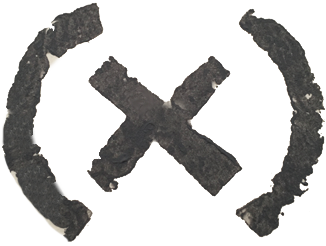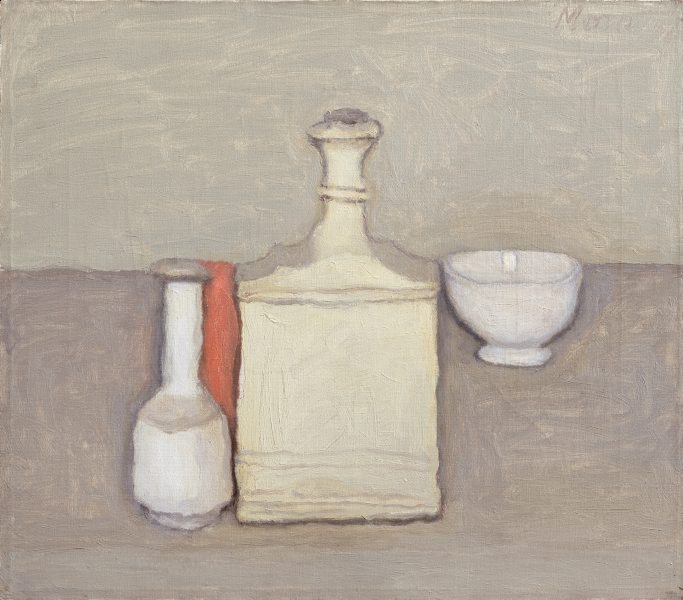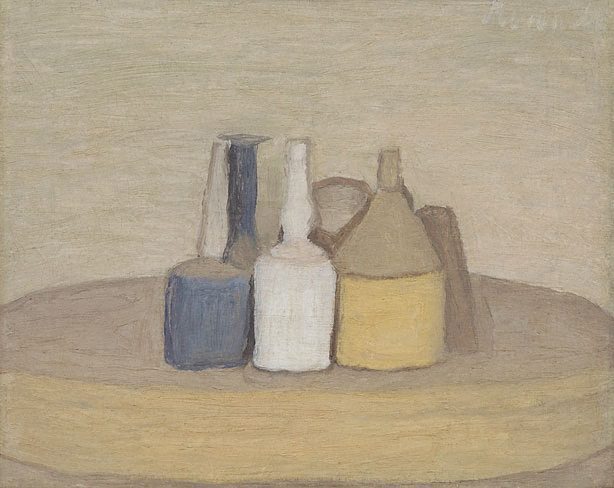So Still
Natura Morta, Giorgio Morandi, 1947, Oil 35.2 x 44.8 cm; 61.2 x 70.8 x 4.8 cm frame
The canvas was prepared with a white ground layer and an underdrawing made with graphite is visible around the central vase. The oil paint was then applied in thin layers, wet on wet, with lively brushstrokes. The painting has a wooden frame with gilded details. In 1947 a photograph of the painting was sent to Tate that shows an inscription on the reverse of the frame detailing the painting’s title in Italian (‘Natura morta’) and the year it was made (see Alley 1981, p.540).
‘Still life’ 1947 is the third painting by Giorgio Morandi to enter the Gallery’s collection. Painted earlier than our other two paintings (1949 and 1957), and one year before Morandi won the first prize for painting at the 1948 Venice Biennale, one of the major turning points in his career. Over the ten year span of these three still-lifes, Morandi remained perfectly consistent in his approach to painting. He was able to make an extraordinary virtue of his self-limitation. What some have construed as a poetics of silence and others as a pathology of withdrawal, Morandi’s contemporaries recognised as qualities of his uprightness and decency: he was one of the few Italian artists of his generation who resisted the taint of fascism. In addition, the narrow compass of Morandi’s art proved wonderfully conductive to concentrating the mind and heightening the senses.
‘Still life’ 1947 has all the hallmarks of classic Morandi paintings because of its quite radical and unrelenting opacity, frontality and symmetry. As a consequence of these qualities, viewers are made acutely conscious of the unity of the image, surface, shape and size of the canvas; they are confronted by the fleshiness of Morandi’s paint. Thus attuned, the altered pressure of Morandi’s touch, slight squirms and tremors in the drag of his brush, infinitesimal shifts in tone and colour are registered as events of exquisite artistry.
Natura Morta, Giorgio Morandi, Oil, 35.4 x 40.9 cm stretcher; 61.5 x 67.0 x 5.0 cm frame
A reticent and quiet man who eschewed the successive fashions of European modernism, Morandi devoted his artistic career to the unhurried contemplation of the objects and landscapes of his native Bologna. The objects he painted and drew were invariably prosaic. Morandi gathered them together into intimate clusters. An unerring judge of proportion, he imbued these compositions with an extraordinary sense of unity, realising the lyric possibilities of his objects through subtle intervals of colour, tone and space. The familiar forms of jars and pots are simplified, yet their essential qualities seem to be heightened. In this way Morandi suggests an abstract monumentality: a characteristic associated with metaphysical painting. The classic composure of Morandi's work depends on a technique that leaves nothing to chance or improvisation.
Art Gallery Handbook, 1999.
(RA)




